Ever wish you could organize your content in such a way that your visitors and search engines can find your posts instantly? With WordPress categories and tags, you can do just that.
They help your readers and search engine crawlers to find different posts on your website with ease. But since both are so similar, many people confuse categories and tags.
In this article, we’ll take a look at what are WordPress tags and categories. We’ll also show some best practices for using them to help improve your SEO (search engine optimization) strategy.
Let’s begin with…
What are WordPress Categories?
Categories are broad topics under which you can group a large number of posts. You can think of it as a general topic under which you can put together posts of similar nature.
For example, tutorials can be a category on a website that publishes a lot of how-to articles. And if you have a food blog, then you can create a category for recipes.
You can set create categories in WordPress by going to the dashboard and then navigating to Post » Categories. Now enter the name and a slug (URL) for your category. If you leave the field for slug blank, then WordPress will use the name to create the URL.
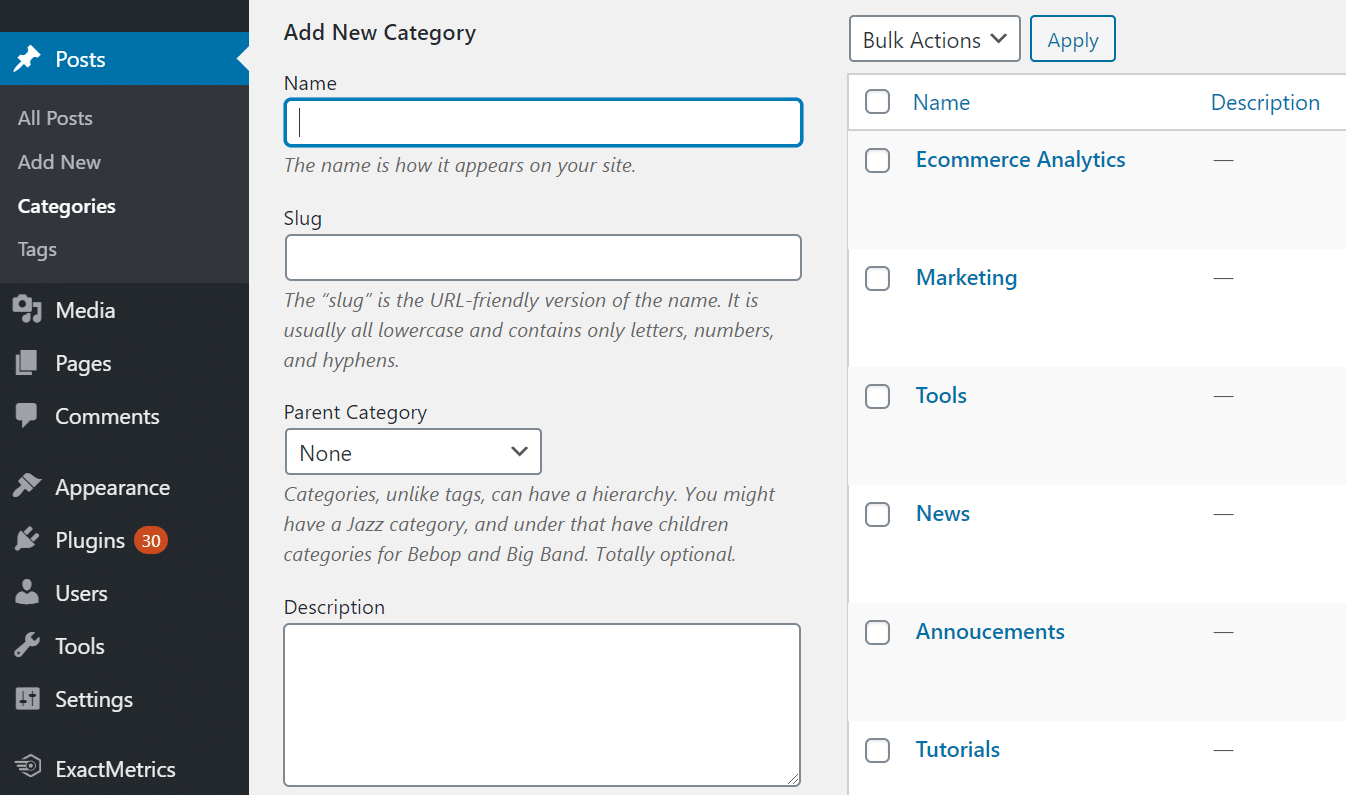
Besides that, you can have a hierarchy of categories and create sub-categories by defining a parent topic. This helps if there are a lot of posts under one category and you want to break them down into sub-topics.
As for how many categories you should have, well there is no fixed number. You can have as many as you want. If you’re just starting a blog, then start with 3 or 5 and then add more as your site starts to grow.
After creating different categories, you can then go to your post editor and assign each post a category. It should appear in a small box on your right-hand side in the editor.
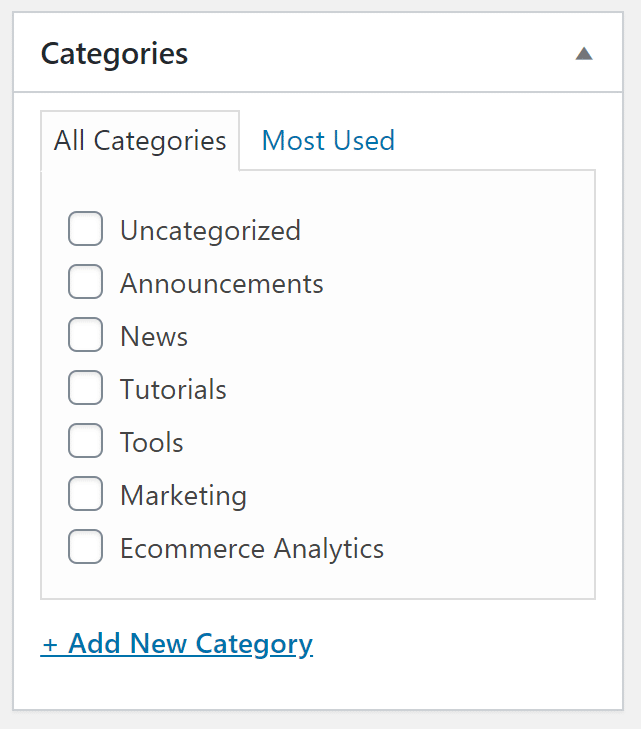
What are WordPress Tags?
Tags are more specific and provide more information about a particular post. These are words or phrases that help users know what’s the post about.
You can also use tags to group similar content together. Let’s say you have a travel blog and one of the tags is Australia. If anyone clicks on the tag, they can see all the posts related to Australia.
To create tags in WordPress, there are 2 simple ways. First, you can go to Post » Tags and enter different tags for your website.
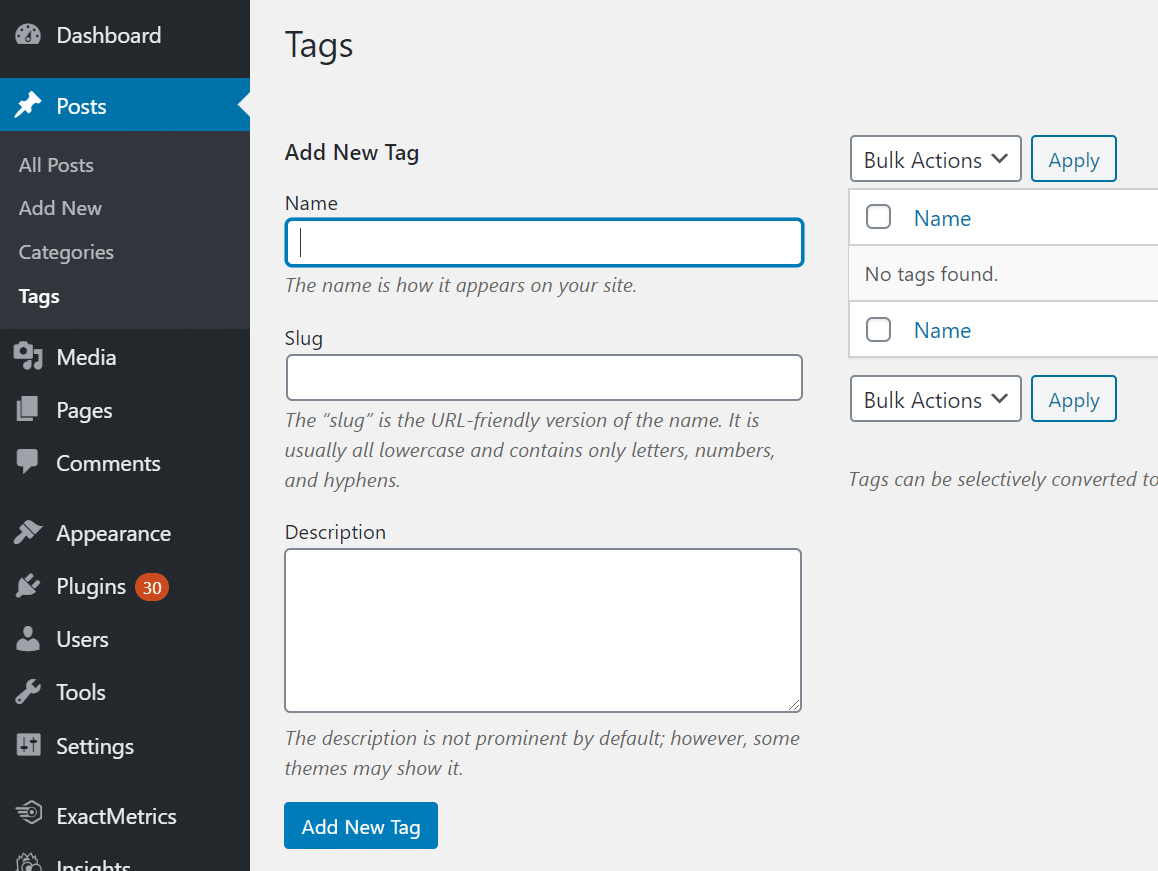
The second method is that you add tags for each post from the text editor. Simply enter the tags for a post and click Add.
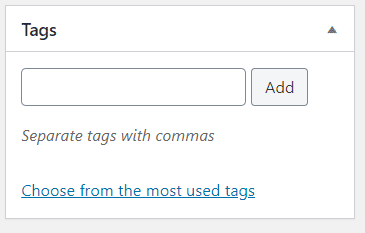
With that, let’s summarize the difference between WordPress tags and categories.
WordPress Categories vs. Tags – What’s the Difference?
Since categories and tags help you organize your posts and allow search engine bots to easily discover content, you might still be confused – what’s the difference between them.
To help you out, here’s why both are different:
- Categories are broad so multiple posts can be grouped under one topic. While tags are specific and describe the details of a particular post.
- You can create a hierarchy of categories with sub-categories, while you don’t need to create a hierarchy for tags since they’re optional.
- There are no restrictions on adding as many tags as you want. But for categories, you should only create enough to properly organize and structure your site’s content.
Now, are you ready to learn some cool tips on how to use WordPress categories and tags to improve your SEO?
Best Practices for WordPress Tags and Categories
If you use tags and categories properly, they can help improve your rankings. Here are some best practices you can follow when creating WordPress categories and tags.
1. Plan Your Website Structure
Before you start to create categories for your WordPress website, it’s a good practice to map the structure of your website.
This will help you see how many categories you should create and whether you need any sub-categories. It also helps to avoid any issue of duplication.
Do remember to keep your site structure as simple as possible. And do that, we recommend using 5 to 10 categories. That way, users and search engine crawlers can easily navigate through your site.
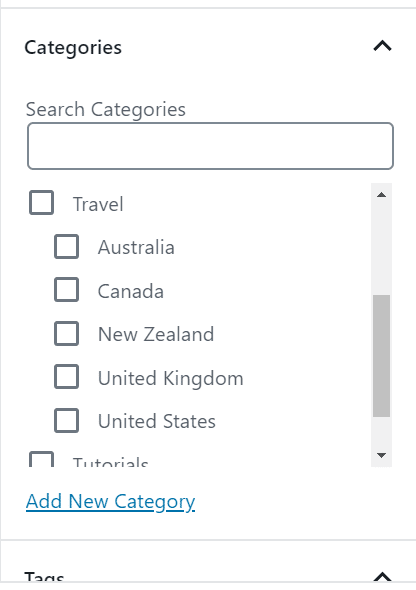
2. Do Keyword Research
Google and other search engines can rank your categories and tag pages on their search results. So, when you’re creating them, it’s better to perform keyword research.
You can also look at your competitors and see what type of tags and categories they’re using. This will help you come up with category and tag names that can boost your SEO efforts.
3. Avoid Using the Same Name for Categories and Tags
At times, you’ll come across posts that can come under the same category and tag. But do note that you shouldn’t use the same name for categories and tags. That’s because it will confuse the search engines due to duplication.
For instance, if you have a post with the category tutorials. Don’t use tutorials as a tag for that post. Instead, try to come up with tags that help explain the contents of the post.
4. Don’t Use Unnecessary Tags and Categories
As much as search engines support the use of tags and categories, they can also penalize you for inappropriate use.
To avoid any risks of getting a penalty, avoid using unnecessary tags and categories.
5. Avoid Using Too Many Tags
WordPress allows you to add as many tags as you want. You can add 1,000 or more tags for a single post.
But that’s not a good idea.
Having too many tags will create problems for your users and search engine bots to find content on your website. So, it’s a good practice to limit the use of your tags and at a minimum, add at least 3 tags per post.
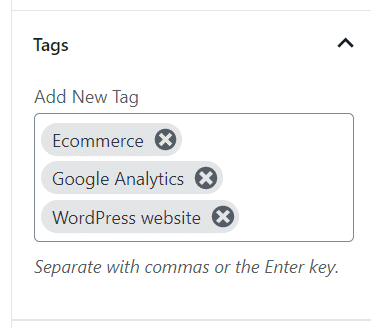
6. Use Tags and Categories Together
WordPress tags are optional for use and many website owners ignore them and only focus on categories when creating their website.
But we suggest that you use both of them.
Tags provide details for specific content while categories can group different posts under a single topic. At the end of the day, both help search engines to show the most useful content to your audience.
7. Don’t Create Additional Categories for Each Author
If you have different authors writing on your website, avoid the urge to create separate or additional categories for each of them.
Many website owners do this to easily distinguish the work of each author. However, that’s not necessary since WordPress automatically categorizes different authors.
Instead, focus on your site’s user experience when creating categories.
How to Track WordPress Categories and Tags in Google Analytics
Now that you know what are WordPress tags and WordPress categories, did you know that you can track their performance in Google Analytics?
That’s right, by setting up custom dimensions, you can see which categories and tags are more popular.
And the best tool to do this is ExactMetrics. It’s the best premium Analytics WordPress plugin you can use today. Thanks to the plugin, you can add Google Analytics to your site in an instant and without any coding.
ExactMetrics offers a Dimensions addon that helps you configure tracking of your WordPress categories and tags. Once you’ve set up the plugin and its addon, you can see which category and tag get the most traffic.
Using this information, you can create more content or promote products for that category or tag.
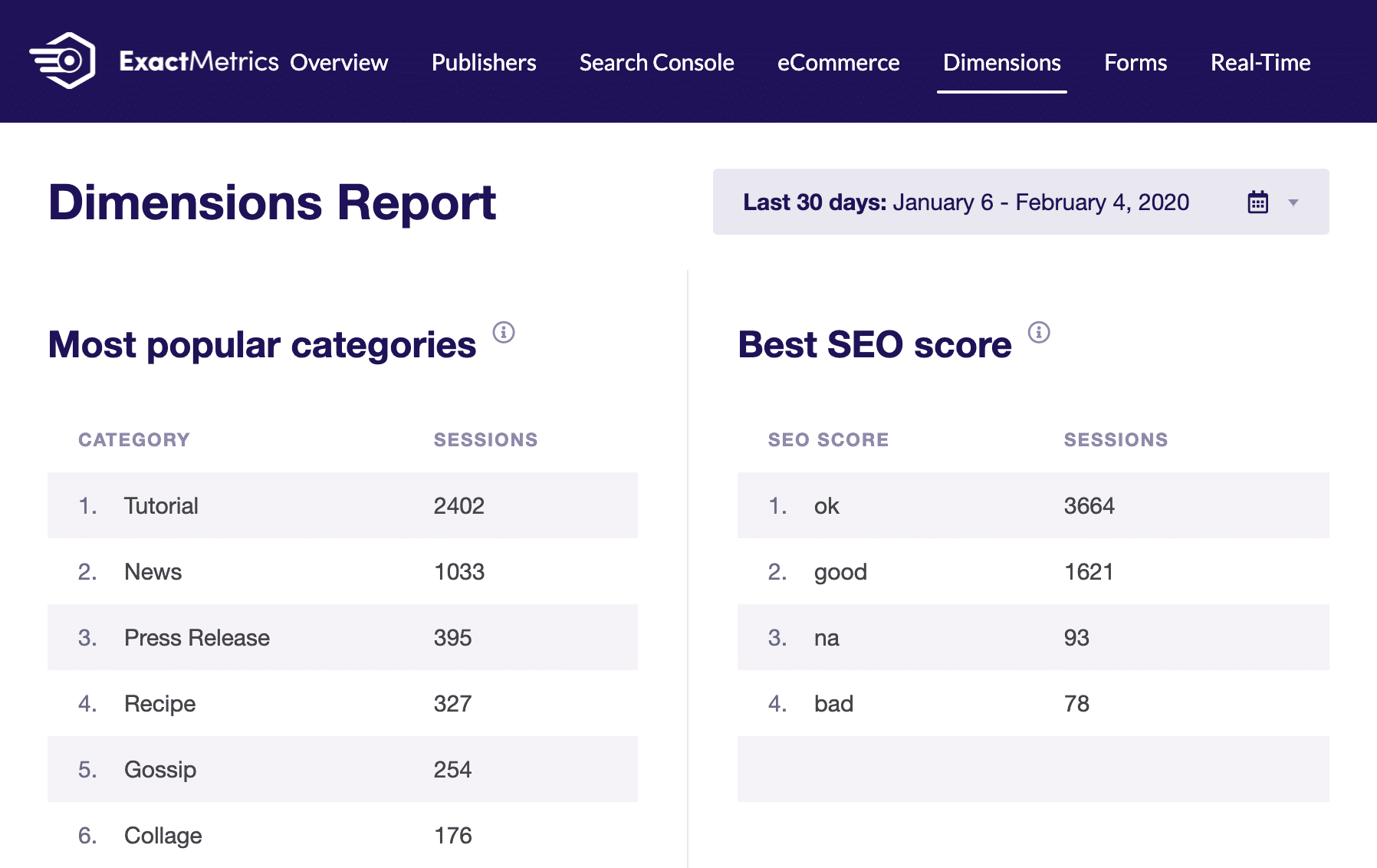
And that’s it!
We hope you liked our article in what are WordPress tags and categories. If you want, you can also go through our post on what is Google Analytics direct traffic.
Don’t forget to follow us on Twitter and Facebook to get to know the latest guides on Google Analytics and WordPress.


Tags and categories are always confusing.
For example, if your topic is ” expository essay introduction”, what can you add as your tags and categories?
Hey Dandy,
They are totally confusing! Depending on the subject of your entire site, it sounds like maybe that topic might fit into a category like “Essay Writing” with tags of “expository essay” and “essay introduction”. Or if essay writing is the topic of your entire site, the category could be “Expository Essays”. Think of categories as more broad – you want your categories to cover a whole section of your posts. Tags are an optional second way to group posts. Categories are your main way of categorizing.